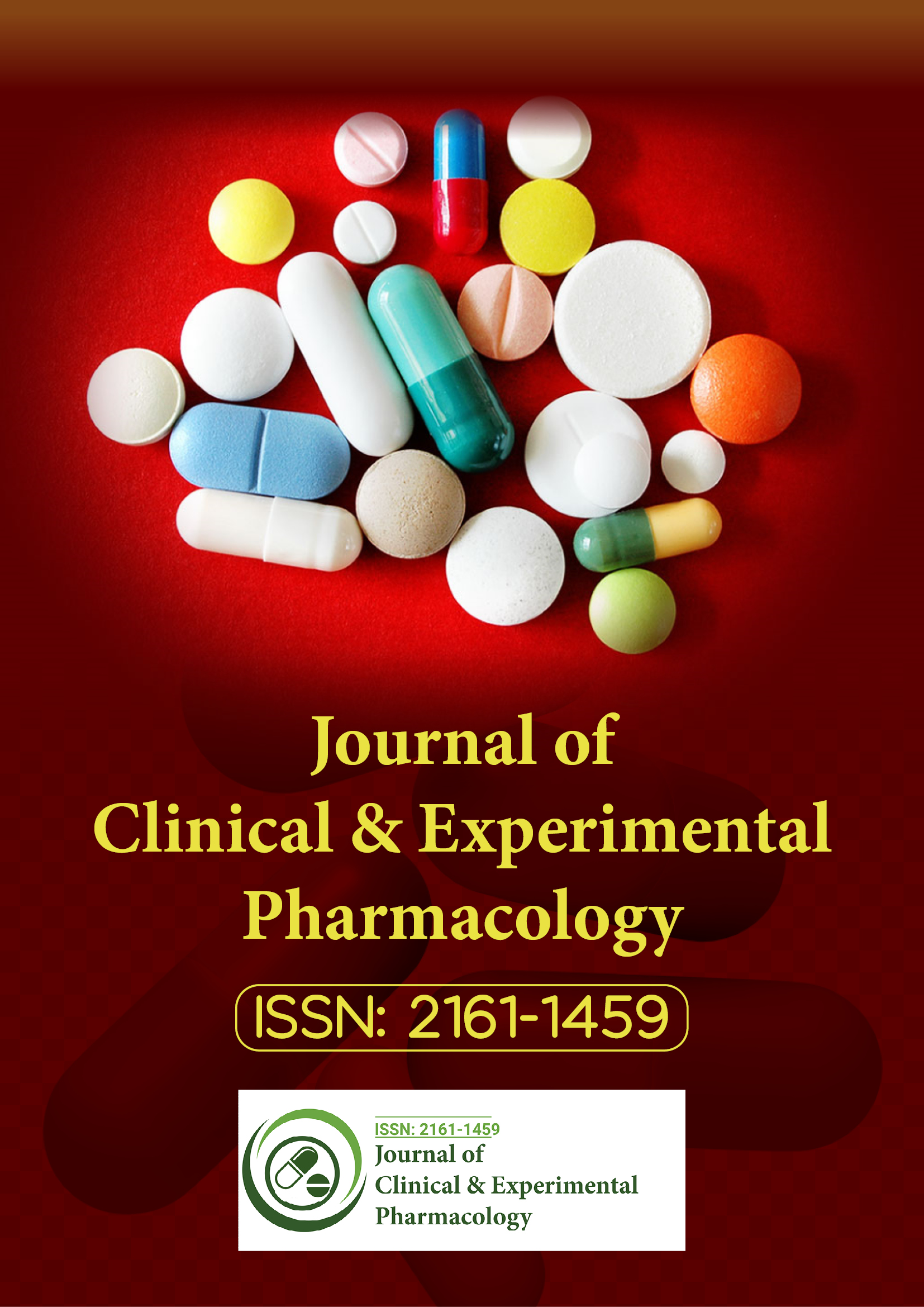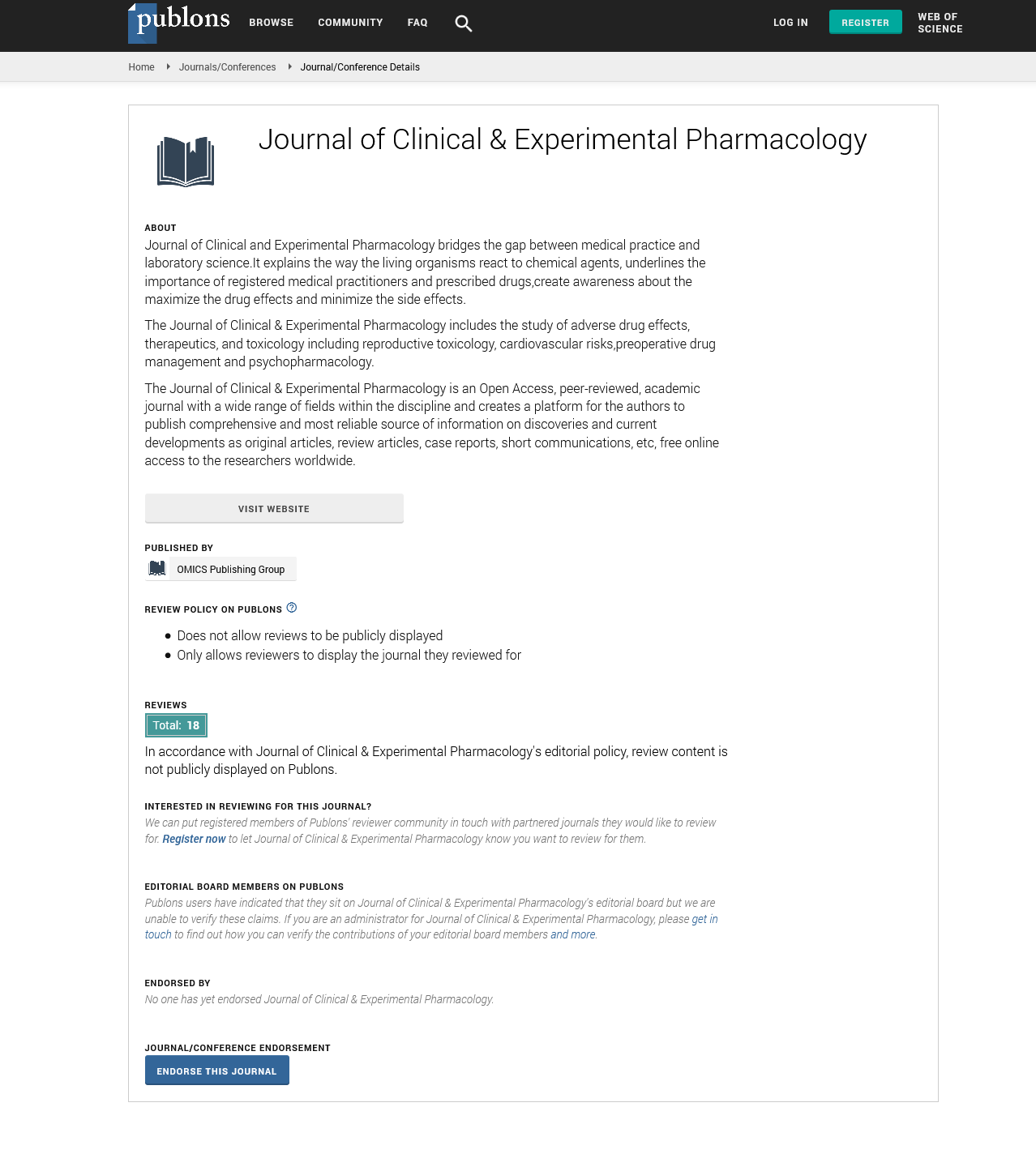Indexed In
- Open J Gate
- Genamics JournalSeek
- China National Knowledge Infrastructure (CNKI)
- Ulrich's Periodicals Directory
- RefSeek
- Hamdard University
- EBSCO A-Z
- OCLC- WorldCat
- Publons
- Google Scholar
Useful Links
Share This Page
Journal Flyer

Open Access Journals
- Agri and Aquaculture
- Biochemistry
- Bioinformatics & Systems Biology
- Business & Management
- Chemistry
- Clinical Sciences
- Engineering
- Food & Nutrition
- General Science
- Genetics & Molecular Biology
- Immunology & Microbiology
- Medical Sciences
- Neuroscience & Psychology
- Nursing & Health Care
- Pharmaceutical Sciences
Protective effect of a sulfated polysaccharide isolated from the green seaweed Caulerpa racemosa on temporomandibular joint hypernociception in rats
World Congress on Pharmacology
July 20-22, 2015 Brisbane, Australia
Natassia A Ribeiro1, Renata Line da C Rivanor1, Danielle Rocha do Val1, Ellen Lima de Assis1, Raul Sousa Freitas1, Juliana Trindade Clemente-Napimoga2, Mirna Marques Bezerra1, Helliada Vasconcelos Chaves1 and Norma M B Benevides1
Scientific Tracks Abstracts: Clin Exp Pharmacol
Abstract:
The current study aimed to evaluate the antinociceptive effect of a sulfated polyssacharide from the green seaweed Caulepa racemosa (CrII) on temporomandibular joint (TMJ) hypernociception. The CrII has been extracted by proteolytic digestion followed by fractionating in ion exchange chromatography on a DEAE-cellulose column using a NaCl gradient (0.0 -1.5 M). Male Wistar rats (200-220 g) (n=5) were treated with saline or CrII (0.01, 0.1 or 1 mg/kg; i.v.) 30 min before TMJ injection of 1.5% formalin (50 ?L) or saline (sham group). The nociceptive behavior was measured as flinching the head and rubbing the orofacial region for 45 minutes, as a nociceptive assay. TMJ periarticular tissue was removed to procedure TNF? and IL-1? dosage by ELISA. Also, were used naloxone 15 ?g/10 ?l (intrathecal) 15 min prior to CrII; or aminoguanidine 30 mg/ kg a selective iNOS Inhibitor); ZnPP 3 mg/kg (s.c., a selective inhibitor of hemeoxygenase-1); or glibenclamide 10 mg/kg (i.p., binding to and activating the ATP-sensitive potassium channels) 1h before injection of CrII. Pretreatment with CrII inhibited (p<0.05) the nociceptive response of rats compared to formalin group. CrII (1 mg/kg) significantly (p<0.05) reduced TNF? (3.13±0.3) and IL-1? (5.39±1.03) levels in the TMJ periaticular tissue, compared to formalin group (6.38±1.0 and 15.19±6.38, respectively). The administration of naloxone, aminoguanidine or glibenclamide were unable to reverse the effect of CrII, although ZnPP reversed the effect of CrII. These data suggest that CrII reduces TNF? and IL-1? on the TMJ hypernociception, and the antinociceptive effect of CrII is dependent from hemenoxygenase-1 pathway.
Biography :
Natassia A Ribeiro has a degree in biological sciences and she did her masters in biochemistry and now she is in her last year of Doctoral at Federal University of Ceara, Fortaleza, Brazil. Upon graduation she worked with anticoagulant, antithrombotic and pro-inflammation activities. In her masters she worked with the antinociceptive and anti-inflammatory activities, using biomolecules such as polysaccharides of algae. These studies led to a paper in inflammation research.

